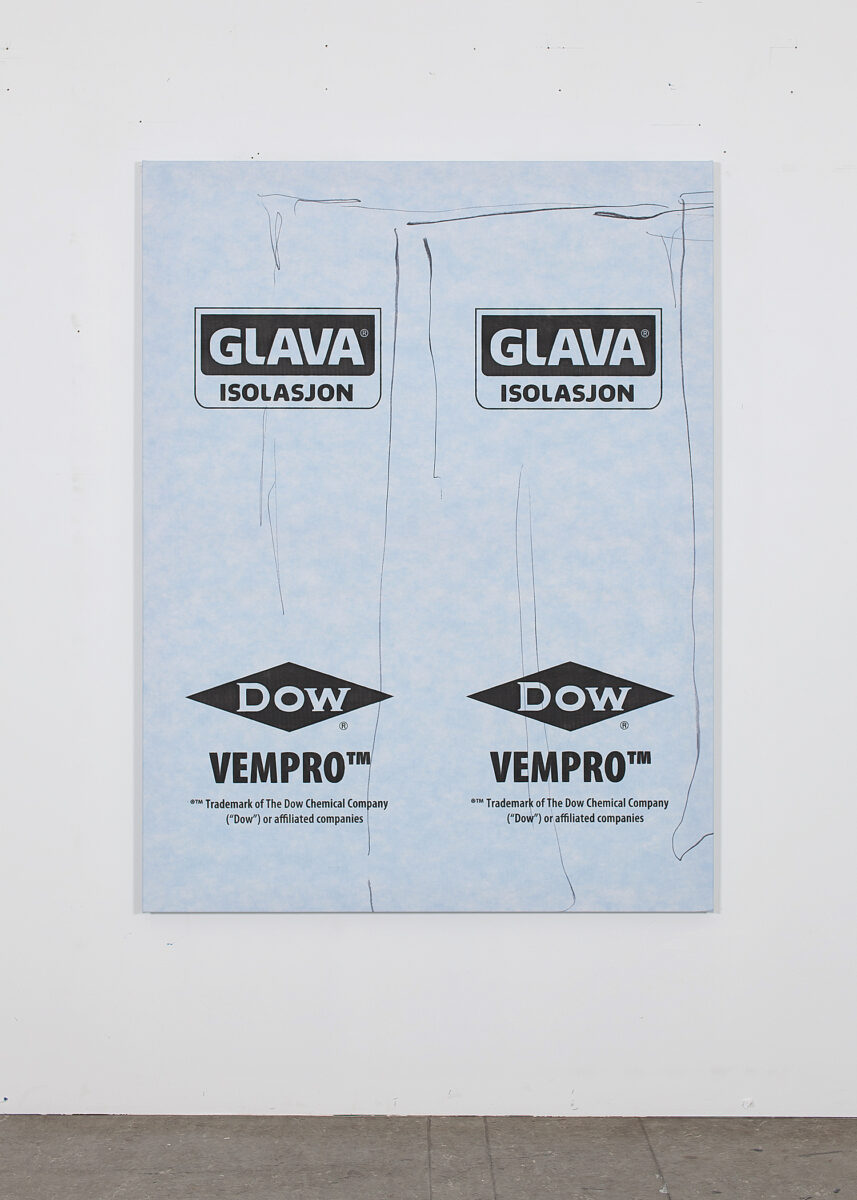
Image courtesy of the artist and Galleri Opdahl, Stavanger
Olve Sande checks in from Oslo to speak with Erik Sommer about the influence of place, how he conceives his work, being inspired by reading, and testing new pieces against the mess of daily life.
To work and to make things is just another way of thinking.
(ES) Tell us a bit about your background. Where did you grow up?
(OS) I grew up in a small town in the west of Norway, Førde. We had a rather big house, and my bedroom was in the furthest corner of our house. My parents were always at home, and with no kindergarten I could spend a great deal of time in my own company, doing things in my own pace, more or less undisturbed.
Where do you live and work now?
I live and work in the suburbs of Oslo, Norway. We moved here two years ago from the city center. They call it an artist colony, the houses were built by the city in the late 50s for artists. The first artists who moved in could pay for the studio part of the house with their works. Every house has an integrated studio with tall ceilings and clerestory windows. It was another time, perhaps, when art and turpentine was flowing freely throughout the open plan. So we use the studio as a living room, and I work in the basement, directly below.
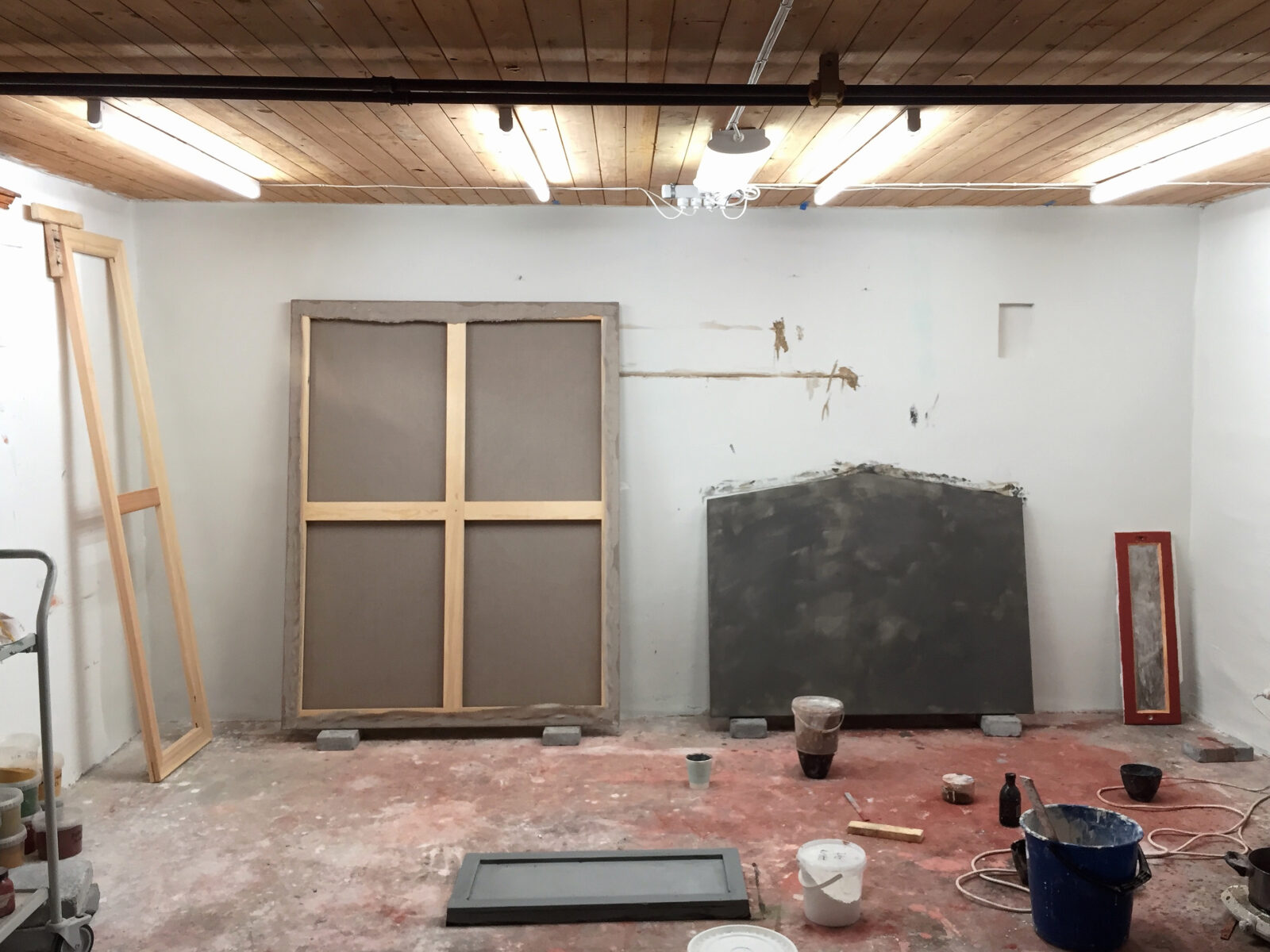
Image courtesy of the artist
How do you think this has influenced your work?
My work is very much influenced by the place they are made. The generic quality of most studios, the lack of placeness, has been an issue for me. I find it difficult to work in a typical studio. When I enter these spaces I am made into an artist because it is the only thing it is possible to be in a studio. It makes me uncomfortable and I feel kind of silly, like entering a stage pretending to be a serious actor. It is the reason why most of my works have been produced in the gallery space so that they come out of a specific, spatial situation. Curiously enough, I feel less like an artist in the gallery space. It makes little sense.
As I said, we moved here a couple of years ago and it is the first time I feel a true connection to what I probably could call my studio. I work in the basement. It is small, low, little windows, bad air, but it is the best studio I have ever had. It is a place in itself that the work can come out of, and it exists without any idea of art. It is possible to be there without being an artist. It is a part of the movements of daily life, like going to the kitchen, the bedroom. I could not imagine that the work I do there could happen anywhere else, for sure not in a studio.
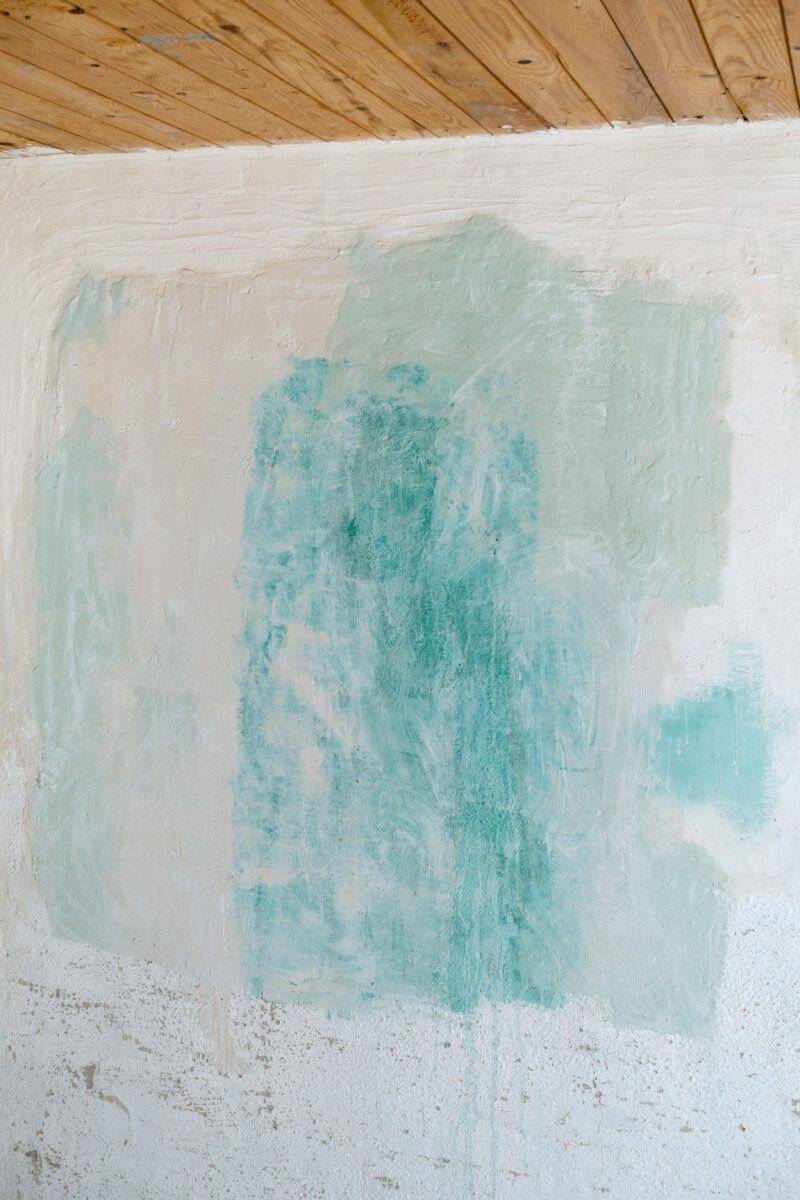
Do you remember any artists as a child that captured your attention?
I have little memories of being interested in art as a child. But we had a neighbour that was an artist, and I think that he made a stronger impression on me than I may have realised, his way of life more than his art. He lived in a brown house across the street. He lived alone, with a big flat rock in his garden where we sometimes had a picnic. Through the big picture windows of his first floor living room we could see that his walls were filled with watercolor seascapes and charcoal portraits. His paintings were really wet, blue and grey. It reminded me of rain or tears.
As a child, all this was really mysterious. Just to live alone, this way of living with art rather than people, that the big living room, the exact same as the one I lived in, was filled with paintings, drawings rather than people. He was just very different from everything I knew, and I felt kind of sorry for him. His work looked so sad, I assumed he was very lonely. Looking through his windows there was also this sense of an absence, another part of his life that was not visible to us. I never saw him with anyone, but there were many portraits at his walls, always in charcoal, dark. Of girls, perhaps the same one. There was this idea of the people he met but that we never saw, traces of a different life, or perhaps a past.
Any artists today you are looking at?
There has been a slight shift in how I conceive an artwork. I look less to other artists than I did, and when I do I am often more interested in how they live or lived as artists, rather than the work itself. David Ireland and Donald Judd both lived with art, with being an artist, in a way that I appreciate. Recently I have been studying Roman painting, which is more or less anonymous, but seems relevant to what I do. I also look to Alberti, Serlio, Vitruvius, mostly for their precise treatment of apertures. I am more and more interested in the idea of frames and their relation to the void. I am also influenced by some architects, or rather, the architecture of some architects, as the biography of architects are rarely interesting. The empathy and imagination of Shinohara has changed my perception of what a plan can contain, how it can be read, thought, a kind of poetry I had not seen in architecture before. His plans also reveal the true value of circulation, which is perhaps the opposite of movement, the benefit of a superfluous stairs.
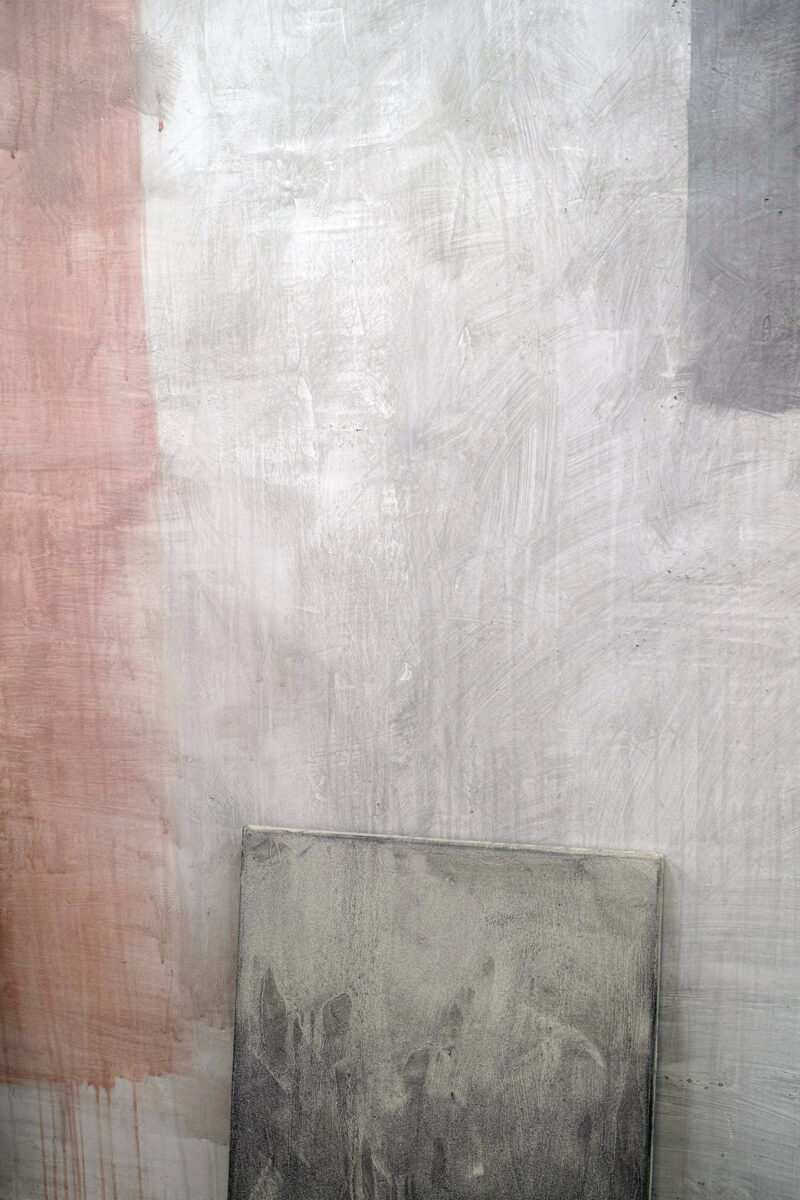
This background in architecture is noticeable in your work, but your literature background less so. How do you think it has influenced your work?
When I quit my architectural studies it was to read. I was fed up with everything that had to do with design and I needed substance. I had not read much before, but I spent a year just reading, novels mostly, from the canon of Bloom. I then began my literary studies. It is the best thing I have ever done. When I learned to read I felt I could read anything, and it opened up art for me. I understood there was little difference in reading a poem or an artwork. Still, studying literature, I missed the physical aspect of it. That was what attracted me to art. I had no intention of making “art”, and I had little idea of what it was, but it was a way of gaining more freedom, to read, to write, and at the same time have a proximity to the physical, material world. Perhaps also the idea of the studio, or this room where I could be left alone, to read, to think, to do whatever I needed to do. Reading and books are still my main source of inspiration, what is closest to my heart. To work and to make things is just another way of thinking.
You have spoken about the interaction between a predefined concept and the situation of production. Can you expand on this?
The concept is always abstract, the work always concrete, and I think they are interdependent. In architecture this is very obvious, how the concept always has to adapt to the physical reality, most importantly the site. Theoretical architectural works rarely seem relevant- it is like a game, like much conceptual art. There is no real obligation, little necessity, which I think is crucial for any work of art. The situation of production, the work itself, gives the abstract thought a necessary resistance. It gives it relevance because it has to relate to the real world.

Do you prefer to work on-site or in your studio?
Previously I always preferred working on-site. Now I prefer my studio, but it is only because I could consider it a site. And even better, it is a private, unexposed site, which makes it very suitable for art.
On previous projects you have used industrial material found on-site, such as plaster, plasterboard and spackle. Are you influenced by the readymade?
These are the materials that surround us, the materials that constitute the physical, built world. To work with artist paint seems like a more artificial choice to me. It has always seemed absurd to me to make this division between art materials, art works, and the rest of the world. I want an artwork to function among other things, to be a part of what surrounds us. In architecture nobody considers the plasterboard a readymade. There is no reason we should think any differently of this within an art context.
Do you consider yourself a painter, or are you not concerned with such classifications?
More and more so, because I realize the radicality of being a painter. It is a very clear position, when you refuse to speak, refuse to write, refuse to build. This is obviously a paradox, a point where I can not agree with myself, because both literature and architecture is so important to me. What makes me a painter or an artist is perhaps more through a negative definition rather than a positive. It is more about what I am not able to do than what I can. It is a kind of stuttering, a cramp that makes me an artist – the disability to just go on with the work, to move on. The artistic work is a part of the same movement as architects, writers, thinkers, but it is slower, clumsier, less clear.
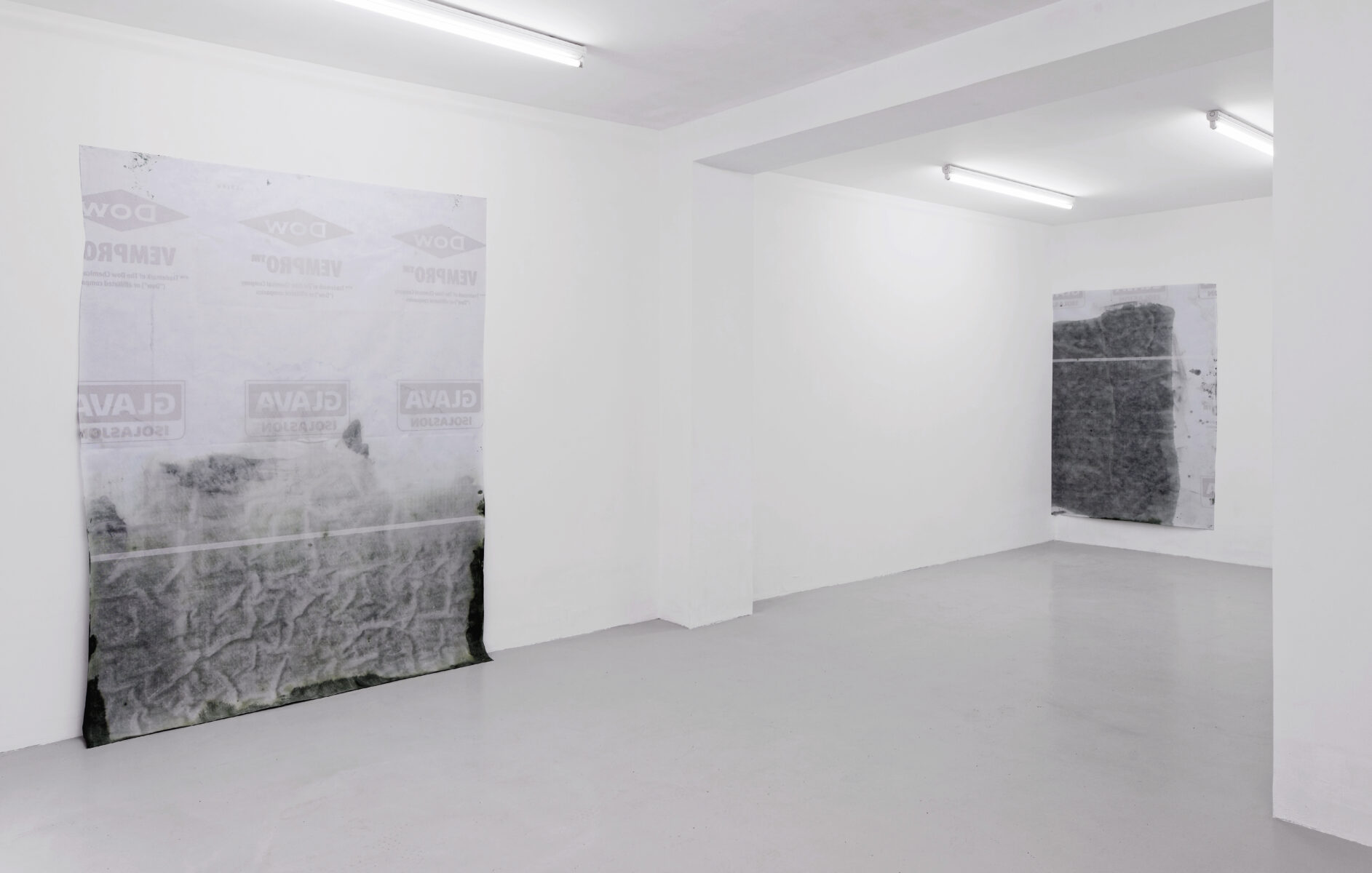
installation view
Image courtesy of the artist and Galerie Antoine Levi, Paris
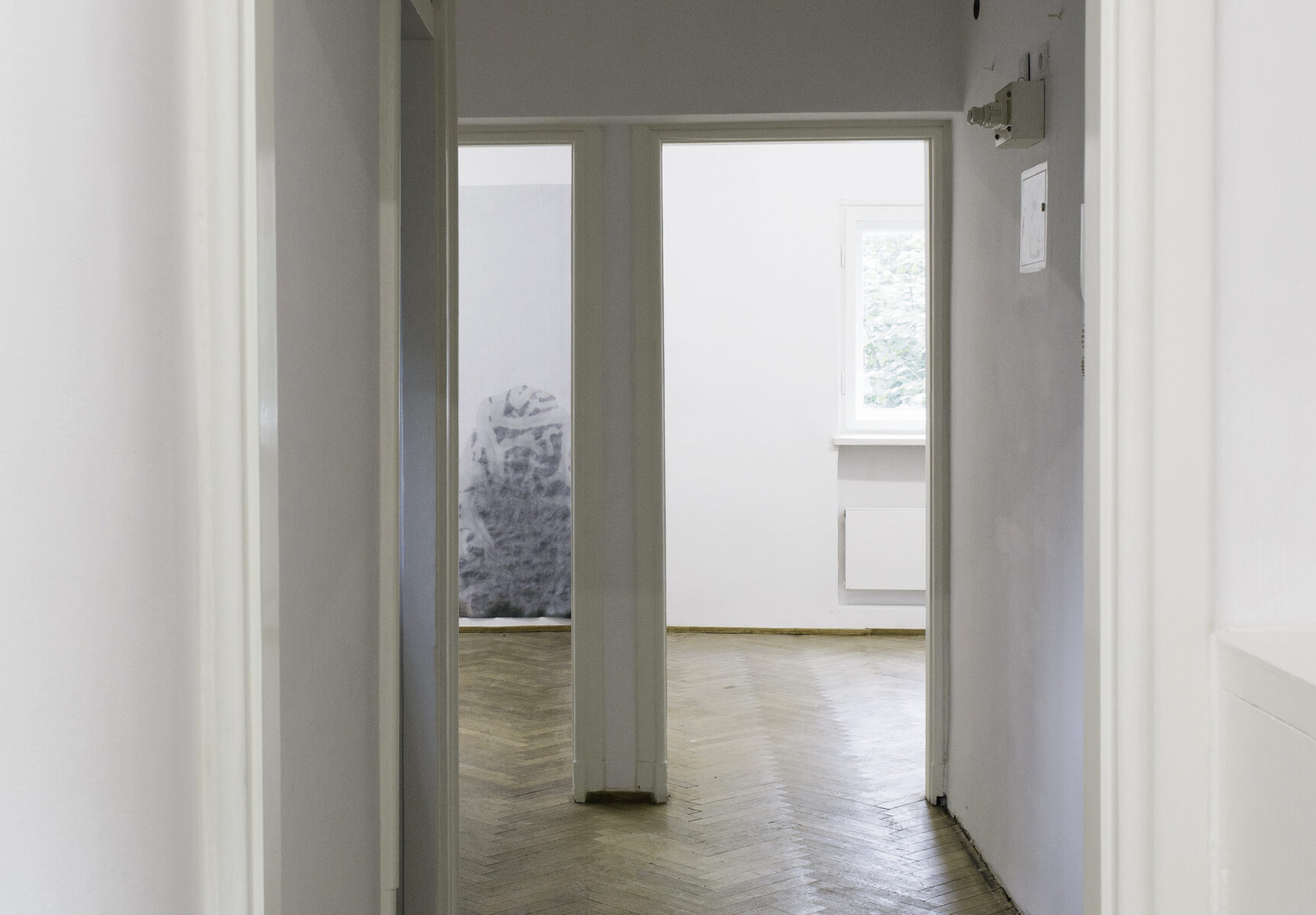
installation view
Image courtesy of the artist and Galeria Wschód, Warsaw
What is your normal studio practice like? Any routines or superstitions?
My basement is not a place to be for other than work. It is not so pleasant to be there. I go there when I have something to do, when there is something that I want to try out, experience, something that can only be understood physically. When I have nothing more to do I leave it. When I have made something that I think may be a work I carry it up to my living room and I live with the work to get to know it and see if it survives this meeting with reality, if it is able to keep its strength through the noise of children playing, the mess of daily life. If not I send it back down in the basement.

What about your working technique? Walk us through how you start and then develop a piece.
It begins and ends with the material, which is a kind of a metaphor or image that I have to digest, first in my mind, then through work. My recent works, the pink paintings, come from a visit in Italy last fall. When I came back home, after everything I visited and saw, what stuck with me was an image of a kind of pale red, pink, the mineral, and a vague idea of a niche as a concept, of hollowing out, something we do not have in Norway because everything is built out of wood.
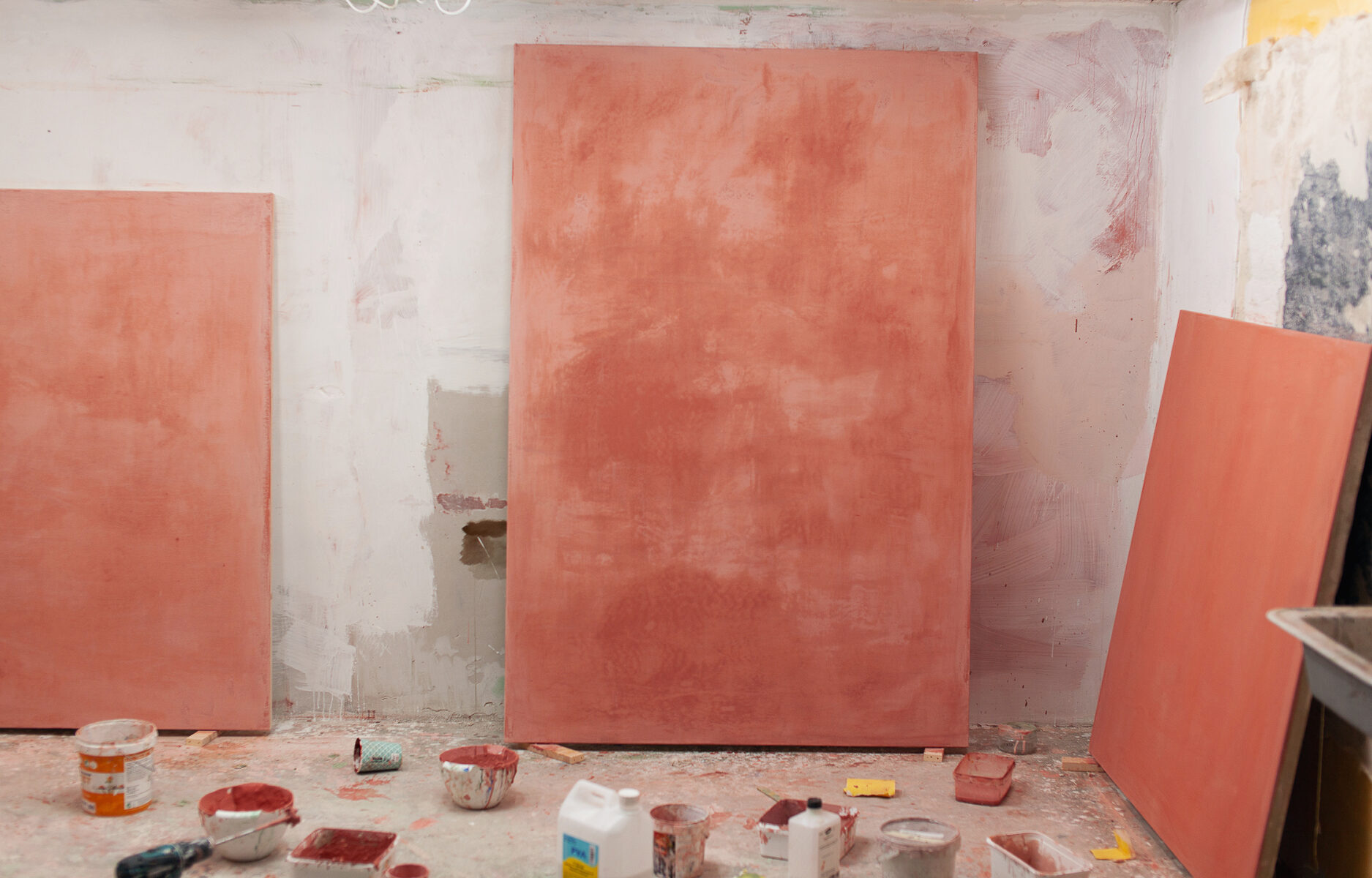
I have realized it must have been a synthesis of many spatial experiences: a partially erased mural at the monastery of Santa Croce, a niche in the Palazzo Te, the pink marble of Basilica San Petronio and a studio visit with the artist Franco Guerzoni who had made a small niche in one of his paintings. All this became pink to me, and it had to do with the wall, the mineral. I then had to figure out how to make this very specific pink, trying different pigments, mixing it with chalk, plaster, marble. I had to try to make a niche in my basement wall, to understand this experience of making a niche, what does it mean to dig into the wall, what happens with the wall once it has a niche. I think what makes a work, when it happens, is when the work corresponds to this image of the initial experience. Perhaps it is a kind of abstracted, spatial reconstruction. I think many of my works could be read like this. It is not an intellectual process; in these processes I am really very stupid. It is only in retrospect I understand the motive of these movements.
Are you more concerned with the process or the end result?
When I paint, it is to paint, to figure something out through painting. The painting is what happened.
Finally, what is your favorite color?
Pale pink, as mentioned above, and mint green, like the French filler.
To see more of Olve Sande’s work visit his website and Instagram page.
